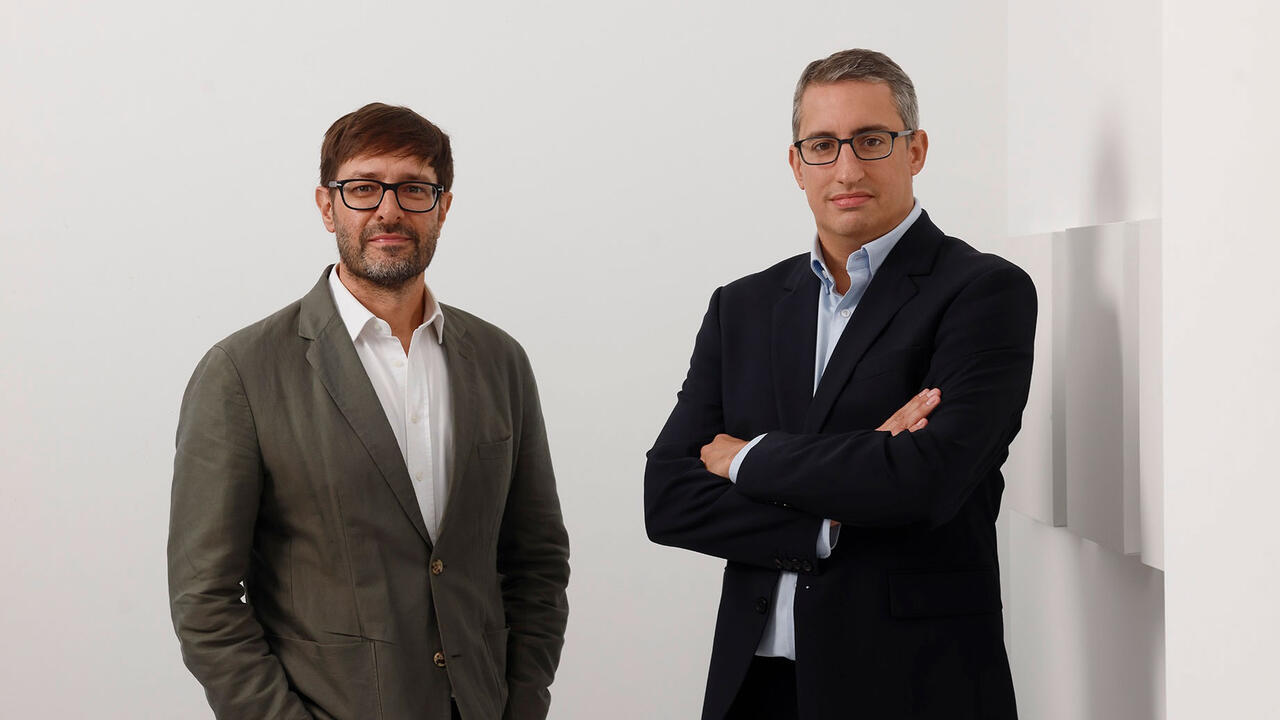Anri Sala

Anri Sala’s interest in film goes far beyond the image. In previous exhibitions, he has redefined the spectator’s relationship to the viewing space, or balanced the ‘pastness’ of film with the immediacy of live performance. In his most recent show, at the Centre Pompidou, he tackled the perception of the subservient role of sound in relation to filmic visuals. A montage of four of his recent films began on one of the five large screens installed around the space, only to stop short and move across to another – with the sound preceding the visuals at every change of screen. As each film unfolded, musical motifs from its soundtrack criss-crossed the venue: like recurring visual patterns, they pulled the space together into a tight-knit whole. This filmic exhibition underscored sound’s complex relationship to movement and space, and challenged the supremacy of the image.
While Sala’s strategies for integrating film into the museum may have evoked Philippe Parreno’s solo exhibition in the same space in 2009, the latter’s whimsical playfulness has little in common with the tight interplay of allusions and correspondences underlying the Albanian-born artist’s show. Most striking in this respect were the live sounds played in the space by instruments that also appear in the films: the soft flutter of the automated snare drums scattered around the venue (Doldrums, 2008) seemed to hold up a ghostly mirror to the thunderous drum beats in the film Answer Me (2008), just as the faint tinkle of the visitor-operated music box set in the gallery window (No Window No Cry, 2012, which played The Clash’s 1981 ‘Should I Stay or Should I Go’) alluded to the clearly audible sound of the music box in the film Le Clash (2010). Likewise questioning the boundaries between on-screen fiction and off-screen reality, the filmed movements of individual actors as they stood or walked about, echoed the movements of the museum’s spectators. As they stopped in front of each screen before proceeding to the next, their motion set the show’s tempo, building up a sense of anticipation that suspended it in a continuous, ever-repeating present.
Aligning Sala’s work with high Modernist ideals, writer Michael Fried has underscored its continually sustained presentness and high degree of artistic intentionality and control. Yet such a reading elides the contextual factors that Sala also brings into play. The tension Sala creates between formal concerns and the use of sound to heighten, critique and comment on the history of a site or place lies at the heart of his films. Answer Me stages an encounter between a man and a woman in a Cold War-era surveillance station in Berlin, evoking the conflicted relations in the divided city through the protagonists’ antithetical modes of expression: each time the woman utters the words ‘Answer me’, the man responds with a drum roll whose thunderous echo reverberates through the domed space. The endless repetition of words and echoing beats is a means of stymieing narrative by continually deferring the film’s dénouement, while also conveying the feel of being – and lingering – in that particular historically determined space.
Whereas in Answer Me the architecture actively asserts its presence via the reverberating sound, in the film 1395 Days Without Red (2011) the besieged city of Sarajevo forms a silently brooding backdrop to which the soundtrack relates. Shots of the female protagonist running, walking or waiting hesitantly at roadsides for fear of snipers as she crosses the city, alternate with views of the Sarajevo Symphony Orchestra rehearsing a new piece in its repertoire, Tchaikovsky’s Symphony No. 6, ‘Pathétique’ (1893). Connecting musical time to geographical space, the actress hums the symphony to herself as she strides through the streets, drawing from its lyrical grandeur the courage to continue on her way. Replete with music but devoid of dialogue, Sala’s film unfolds like a silent movie that emphasizes movement and gesture: just as the orchestra stops and starts, so does the woman – and the visitor in the space.
Like the exhibition as a whole, the film’s uncanny referentiality induces feelings of oppression and claustrophobia, which are suggestive of the closed Communist regime under which the artist grew up. In an appropriately panoptical twist, the spectators were for the most part unaware that they could be observed through the gallery’s wall-length window by passers-by outside. Nor were they necessarily conscious of the ways their movements were guided by the design of the exhibition – just as the woman’s movements in 1395 Days Without Red are constrained by the imperatives of politics, history and site. The implacable circularity of Sala’s exhibition was more than just a formal ploy: it hammered home the extent to which architecture and place condition our gestures, and through them our daily lives.
















